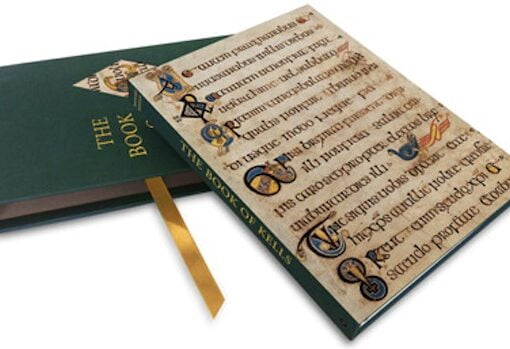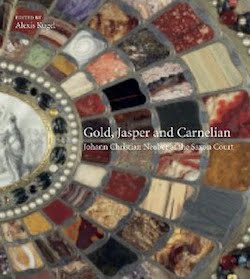With its undulating topography, diverse population, legacy of technical innovation, and reputation for providing safe harbor for liberal attitudes toward political, religious, and sexual orientations, the San Francisco Bay Area is both a haven and an inspiration for a variety of artists, perhaps none more so than those experimenting with alternative film and video. In fact, since the mid-1940s, when Surrealist-influenced films were created in some of the country’s earliest filmmaking classes at the San Francisco Art Institute, the Bay Area has been a global center for an extraordinary constellation of artists who use film and video not for entertainment or documentation, but as an apparatus for the untethered pursuit of personal expression.
 This vital but often overlooked artistic and regional history finally receives its critical due with the decade-in-the making Radical Light: Alternative Film and Video in the San Francisco Bay Area, 1945–2000, a 352-page richly illustrated book published by the University of California Press and the Berkeley Art Museum and Pacific Film Archive. BAM/PFA is celebrating the publication of Radical Light with an accompanying film series, gallery exhibition, and related L@TE: Friday Nights @ BAM/PFA events. Edited, curated, and programmed by BAM/PFA Film and Video Curators Kathy Geritz and Steve Seid, and CalArts Dean of the School of Film/Video Steve Anker, Radical Light offers audiences the first comprehensive overview of this sweeping endeavor to reinvent the moving image.
This vital but often overlooked artistic and regional history finally receives its critical due with the decade-in-the making Radical Light: Alternative Film and Video in the San Francisco Bay Area, 1945–2000, a 352-page richly illustrated book published by the University of California Press and the Berkeley Art Museum and Pacific Film Archive. BAM/PFA is celebrating the publication of Radical Light with an accompanying film series, gallery exhibition, and related L@TE: Friday Nights @ BAM/PFA events. Edited, curated, and programmed by BAM/PFA Film and Video Curators Kathy Geritz and Steve Seid, and CalArts Dean of the School of Film/Video Steve Anker, Radical Light offers audiences the first comprehensive overview of this sweeping endeavor to reinvent the moving image.
Though the book traces the history of alternative film and video in the Bay Area back to 1878 in Palo Alto, when Eadweard Muybridge began his pioneering experiments with the photographic image, Radical Light highlights the mid-1940s as the tipping point for the local development of a community of avant-garde filmmakers such as Sidney Peterson, Harry Smith, Frank Stauffacher, and James Broughton, who made the first Bay Area experimental films. During the 1950s, Jordan Belson, Patricia Marx, and Christopher Maclaine made their first films, and by the 1960s artists such as Bruce Conner, Bruce Baillie, and Chick Strand changed the shape of filmmaking by intertwining film and activism. Radical Light traces the arrival in the 1970s of the first openly gay film artists Barbara Hammer, Michael Wallin, Curt McDowell, and James Broughton, and the first generation of video artists, including Paul Kos, Terry Fox, and Howard Fried. The next wave of mediamakers, including Peter d’Agostino, Theresa Hak Kyung Cha, and Doug Hall, investigated gesture, language, and text as it is reproduced through the image, while artists such as Lynn Hershman, Max Almy, and Chris Robbins constantly tested the relationship of technology to culture. Meanwhile, longtime Bay Area filmmakers such as Nathaniel Dorsky, Ernie Gehr, and Scott Stark explored the formal properties of the film medium; George Kuchar reinvented melodrama; and Craig Baldwin and Trinh T. Minh-ha subverted documentary. Radical Light culminates with the generation that rose in the 1980s and 1990s, such as Marlon Riggs, Greta Snider, Lynne Sachs, Steve Fagin, Anne McGuire, and Tony Discenza, which made its mark working across all media in a style as eclectic as the evolving image-scape.
With attention to contributions from nearly every corner of this disparate community of local alternative film and video artists, Radical Light and its accompanying film series, gallery exhibition, and L@TE events brings this neglected history into the light for audiences to rediscover.
ABOUT THE BOOK:
Radical Light: Alternative Film and Video in the San Francisco Bay Area,
1945–2000
Steve Anker, Kathy Geritz, and Steve Seid, editors
Publication date: October 15, 2010
This kaleidoscopic collection of essays, interviews, photographs, and artist-designed pages chronicles the vibrant and influential history of experimental cinema in the San Francisco Bay Area. Radical Light features critical analyses of films and videos; reminiscences from artists; and interviews with pioneering filmmakers, curators, and archivists. Special sections of ephemera—posters, correspondence, photographs, newsletters, program notes, and more—punctuate the pages of Radical Light. Among the contributors are Rebecca Solnit and Ernie Gehr on Bay Area cinema’s roots in the work of Eadweard Muybridge and others; Scott MacDonald on the Art in Cinema film series; P. Adams Sitney on films by James Broughton and Sidney Peterson; Stan Brakhage, Bruce Conner, Lawrence Jordan, and Yvonne Rainer on the Bay Area film scene in the 1950s; J. Hoberman on films by Christopher Maclaine, Bruce Conner, and Robert Nelson; Craig Baldwin on found footage film; George Kuchar on student-produced melodramas; Bérénice Reynaud on the films of Trinh T. Minh-ha and Leslie Thornton; Michael Wallin on queer film in the 1970s; V. Vale on punk cinema; Dale Hoyt and Cecilia Dougherty on video in the 1980s and 1990s; and Maggie Morse on new media as sculpture.
ISBN: 978-0-520-24911-0
Published by the University of California Press and Berkeley Art Museum and Pacific Film Archive
352 pages, 9 x 11 in., 47 color illustrations, 219 black-and-white photographs
$29.95 (paper)
Book credit: The publication of Radical Light: Alternative Film and Video in the San Francisco Bay Area, 1945–2000 was made possible in part by the National Endowment for the Arts, The Andy Warhol Foundation for the Visual Arts, the William H. Donner Foundation, the Patty and Jack Wright Foundation, the Fleishhacker Foundation, and the continued support of the BAM/PFA Trustees.
bampfa.berkeley.edu



